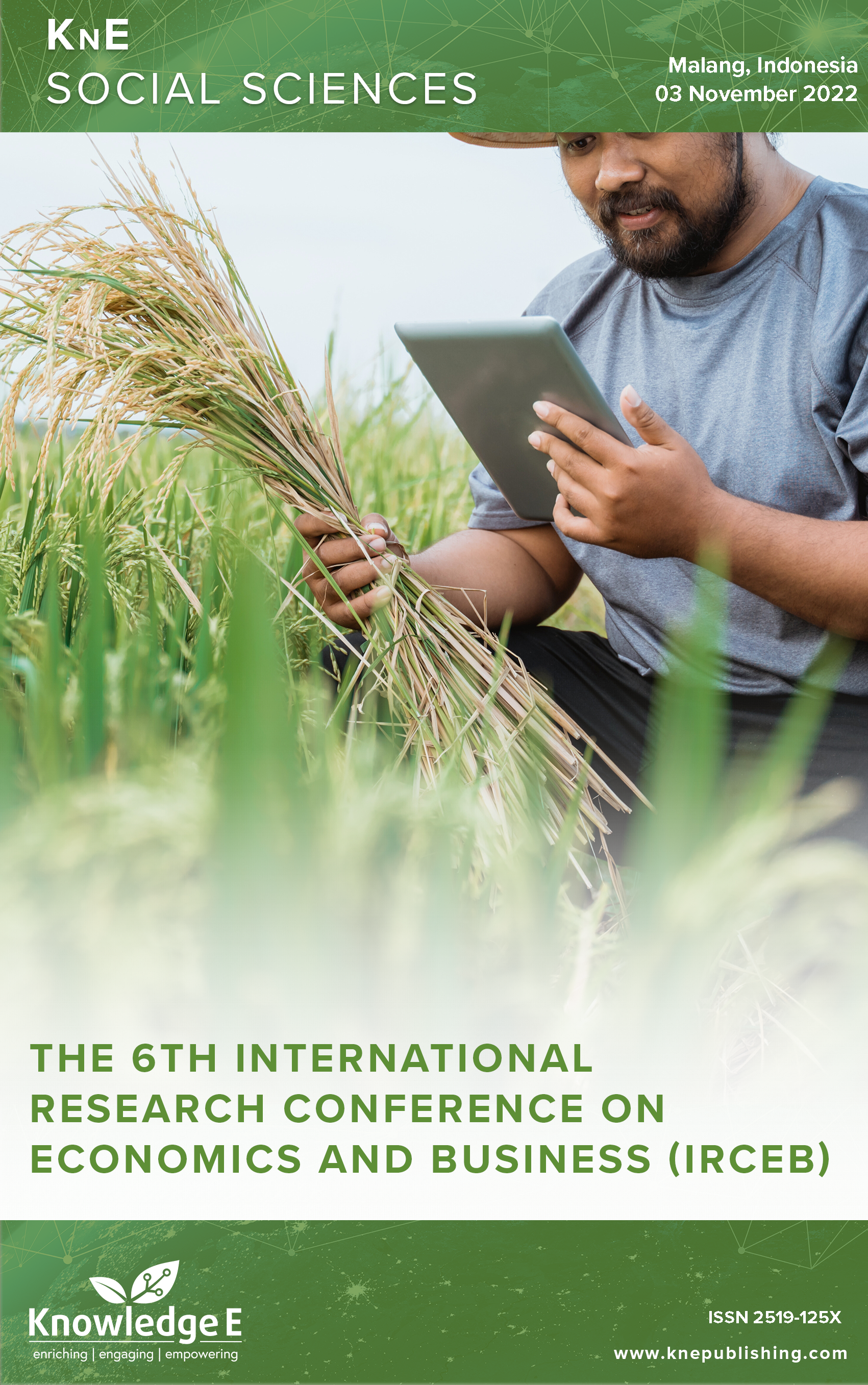Factors Affecting Indonesian Women's Spending During the Covid-19 Pandemic
DOI:
https://doi.org/10.18502/kss.v9i4.15123Abstract
Indonesia as a country that still holds a patriarchal culture, and the Covid-19 pandemic has negatively impacted women. The study aims to: 1) analyze women’s spending conditions during the Covid-19 pandemic; and 2) analyze what factors affect women’s spending during the Covid-19 pandemic. The results of this study can be used as material to formulate women’s economic policies in the future. This study is a type of quantitative research using multiple regression analysis tools. Based on the results obtained: a) the average years of schooling has no significant effect on women’s spending during the Covid-19 pandemic; b) the gender development index has a significant and positive effect on women’s spending during the Covid-19 pandemic; and c) open unemployment has a significant effect on women’s spending during the Covid-19 pandemic.
Keywords: Covid-19, women’s spending, average length of school, gender development index, open unemployment
References
Agenjo-Calderón A, Gálvez-Muñoz L. Feminist economics: Theoretical and political dimensions. Am J Econ Sociol. 2019;78(1):137–166. DOI: https://doi.org/10.1111/ajes.12264
Arshad M, Gull S, Mahmood K. Life satisfaction among working and non working women. European Journal of Research in Social Sciences. 2015;3(1):121–127.
Central Bureau of Statistics. Gender. 2020. Retrieved from https://www.bps.go.id/subject/40/gender.html#subjekViewTab1
Central Bureau of Statistics. Gender development index in Indonesia in 2020 (percent). 2021a. Retrieved from https://www.bps.go.id/indicator/40/463/1/ipg-genderdevelopment- index-.html
Central Bureau of Statistics. The state of the labor force in Indonesia February 2021. Jakarta: BPS-Statistics Indonesia; 2021b.
Central Bureau of Statistics. Concept of consumption and expenditure. Jakarta: BPSStatistics Indonesia; 2021c.
Central Bureau of Statistics. Women’s Expenditures per Capita Adjusted in 2020. 2021d. Retrieved from https://www.bps.go.id/indicator/40/461/1/sex-adjustedper- capita-expenditure.html
Central Bureau of Statistics. Average years of schooling for women in Indonesia in 2020. 2021e. Retrieved from https://www.bps.go.id/indicator/40/459/1/rata-lamaschool- rls-according-gender.html
Becker SG. A treatise on the family. London: Harvard University Press; 1993. https://doi.org/10.2307/j.ctv322v4rc. DOI: https://doi.org/10.2307/j.ctv322v4rc
Faridi MZ. Factors Affecting Women Contribution in Household Budget in Urban Informal Sector: An Analysis. Global Journal of HUMAN-SOCIAL SCIENCE: E Economics. 2015; 15(2).
Flagg LA, Sen B, Kilgore M, Locher JL. The influence of gender, age, education and household size on meal preparation and food shopping responsibilities. Public Health Nutr. 2014 Sep;17(9):2061–2070. DOI: https://doi.org/10.1017/S1368980013002267
Kabir N, Razavi S, van der Meulen Rodgers Y. Feminist economic perspectives on the COVID-19 Pandemic. 2021;27(1–2):1–29. Https://Doi.Org/10.1080/ 13545701.2021.1876906 https://doi.org/https://doi.org/10.1080/13545701. 2021.1876906 DOI: https://doi.org/10.1080/13545701.2021.1876906
Manchanda R. A comparative study of compulsive buying behavior between working and non-working women. Pragyaan: Journal of Management. 2012;10(1).
Omar N, Nazri M, Osman L, Ahmad M. The effect of demographic factors on consumer intention to purchase organic products in the Klang Valley: An empirical study. Geography. Malaysian Journal of Society and Space. 2017;12(2):68–82.
Seguino S. The global economic crisis, its gender and ethnic implications, and policy responses. In Gender & Development (2nd ed., Vol. 18, pp. 179–199). 2010. https://doi.org/10.1080/13552074.2010.491318 DOI: https://doi.org/10.1080/13552074.2010.491318
Wuryandari RD. Factors affecting indonesian household food, education and health expenditures (Susenas Data Analysis 2011). Journal of the Indonesian Population. 2015;10(1):27–42. DOI: https://doi.org/10.14203/jki.v10i1.53

